The Expressive Dances of Kerala
Kathakali
Somewhere in Kerala, every night, the gods and goddesses, sages, de- mons and fabulous creatures live again. Under the bright stars, and beneath the rustle of palms, men, women and children sit encaptured. On a stage, magnified by their moving shadows, the masters of Kathakali,in bright and voluminous robes, their faces made super-human by stylised make-up, strut and turn with stately tred. Drums roll, cymbals clash, and the voice of the singer conjures up the reversed tales of epic and fantasy.
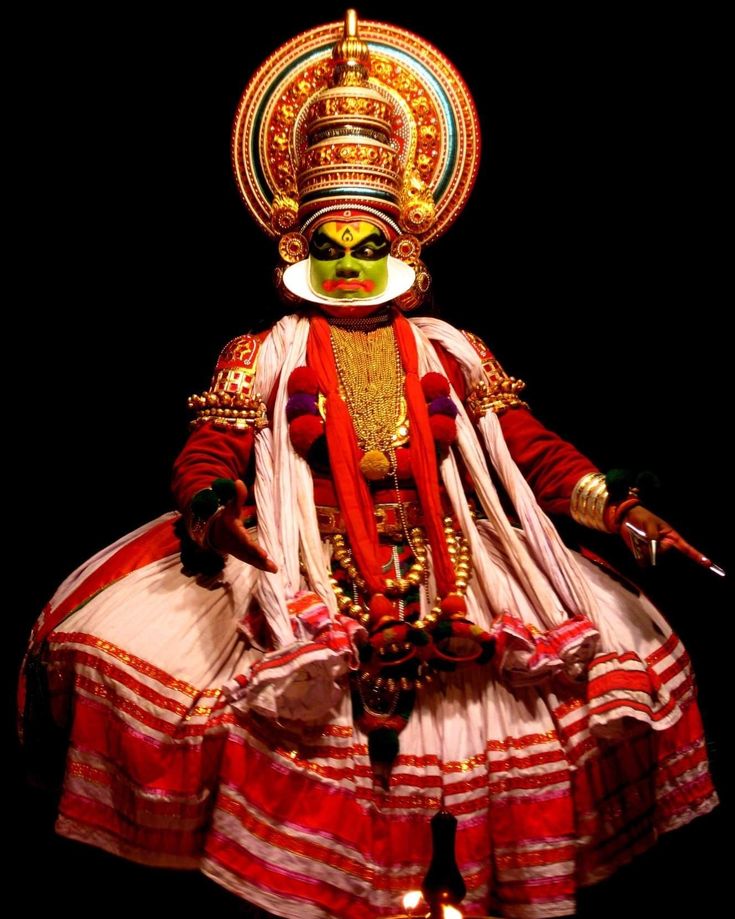
The dancers’ identification with their characters is as complete as is that of any great actor on a modern stage. With this difference. The dramas performed in Kathakali are based on beliefs thousands of years old; they are as much a part of the reality of the audience as the air they breathe and the blood pounding in their veins.
This epic drama’s roots go far back into the past. It grew from folk dances and, possibly, spirit-dances. It evolved through a physical depiction of revered tables for a pre-literate people and took on elements of the martial arts. It absorbed the grace of the high sophisticated Sanskrit dance form of Bharat Natyam and was transformed into a vehicle to translate the epics of this classical language into a common-person’s idiom.
According to the late Dr. J.H. Cousins, Art Advisor to the Govt. of Travancore, Head of the Dept. of Fine Arts of the University of Travancore – Kathakali gathered into itself elements from all the phases of the past-the religious intention, Puranic repertoire and humorous injections of the kuthu; the opening dedication from the ‘Gita Govinda’; the costuming of the Krishnattam; the gestures of the Ramanattam.”
Today, Kathakali is a highly stylised but an extraordinarily evocative art which combines chant, drama, dance, make-up, dress and gesture into a package that spins a compelling spell.
There is little point for a visitor to try to grasp what all the movements and gestures mean. According to experts there are 24 primary hand and finger gestures which give 404 signs, 40 secondary ones indicating 55 signs: a manual code of 459 signs. Then there are movements of the head and neck, the arms and hands, the eyes and eyebrows, the lips, teeth, tongue, feet and toes. All these must be read together as words must be read in sentences, correctly punctuated, and sentences in paragraphs before the meaning can be distilled.
Mohiniattam
Far more culture-bridging, because it depicts emotions in ways which are universally understood, is Mohiniattam: the Dance of the Enchantress. Originally this was a form which had been developed by dancing girls, and, possibly, courtesans. At one time professional dancing girls were considered to be courtesans. In the 1800s, the multi-talented ruler of Travancore State, Swati Tirunal, reshaped this dance form by incorporating into it some of the simpler, and more easily understood, facets of the classical Bharat Natyam along with some of the gestures of Kathakali. An evening of Kathakali is a very gripping one.
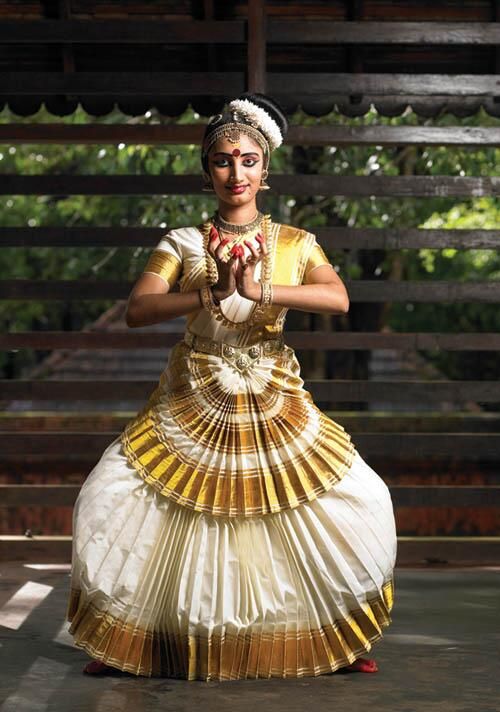
Chavittu Nadakam
The most unusual blend of cultural influences can be seen in the Christian dance-drama: Chavittu Natakam. It has an interesting history.
When the Portuguese came to Kerala, they wanted to create a vehicle to spread the myths and legends they held in reverence. It is more than likely that they were impressed with the gripping power of Kathakali but they obviously felt that it would be unwise to graft their legends onto the Kathakali dance drama. Clearly, the most obvious solution was to create a distinctive dance drama of their own. This is exactly what they did.
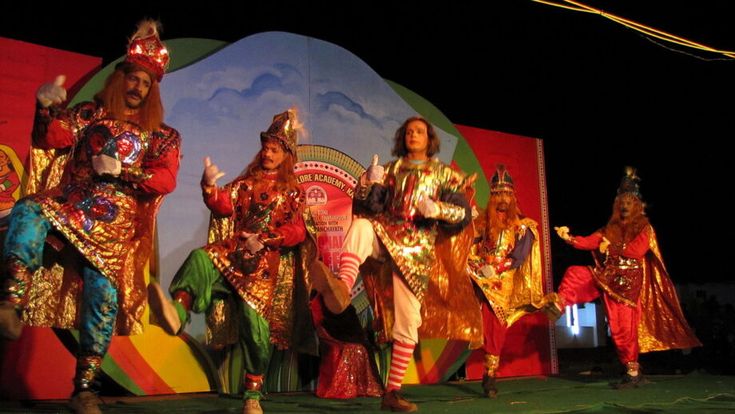
In Chavittu Natakam there are a large number of characters all in glittering medieval dress. They sing their lines loudly and with exaggerated gestures and they stamp their feet with great force on the wooden stage. Chavittu Natakam literally means the ‘Stamping Drama’. One is not likely, however, to see the stage reduced to matchwood as, apparently, used to happen when more militant actors trod… or rather, stamped on… the stage.
Theyyam
Theyyam is a traditional ritual dance form from Kerala, deeply rooted in the cultural and spiritual life of the region. It is performed in temples and sacred groves, primarily in the northern parts of Kerala
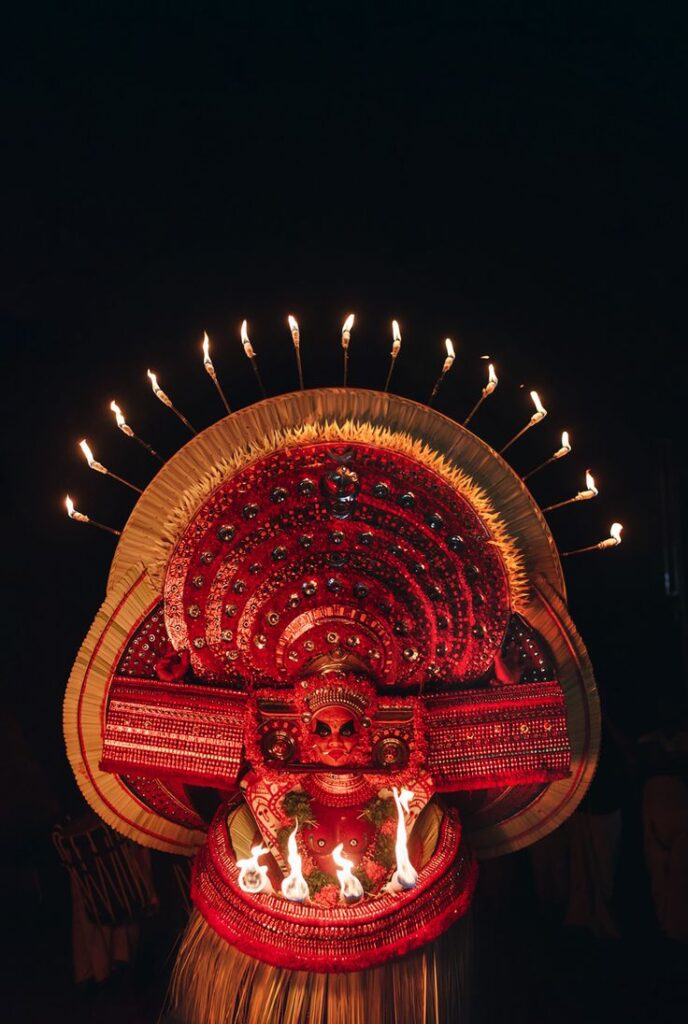
Theyyam is both a dance and a form of worship. The performer, who is often a male, transforms into a deity or a divine being through elaborate costumes, makeup, and masks. The ritual is believed to channel the presence of the deity, making it a sacred experience for the community . The costumes are striking and intricate, featuring elaborate headgear, colorful face paint, and large masks. The performers wear heavy and vibrant attire that symbolizes various gods, goddesses, and mythological figures.
The dance is accompanied by traditional drumming and singing. The rhythmic beats and chants are integral to the performance, guiding the dancer’s movements and enhancing the spiritual atmosphere. Theyyam performances often depict stories from local folklore, mythology, and legends. They celebrate the divine and heroic deeds of various deities and legendary figures.
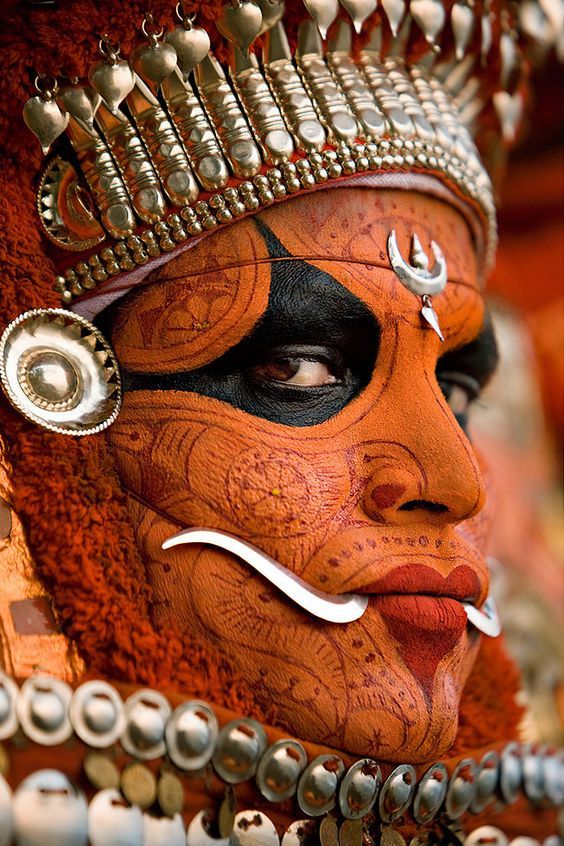
Theyyam is more than just a performance; it is a living tradition that integrates social, religious, and artistic elements. It plays a crucial role in the cultural identity of the communities where it is performed.There are many types of Theyyam, each associated with specific deities and regions within Kerala. The styles and practices can vary, reflecting the local traditions and beliefs.Theyyam is celebrated as a vibrant expression of Kerala’s rich cultural heritage and continues to be an important aspect of the region’s religious and social life.
Thiruvathira
Thiruvathira, also known as Thiruvathira Kali, is a traditional dance performed by women in Kerala, particularly during the festival of Thiruvathira, which falls in the Malayalam month of Dhanu (December-January).
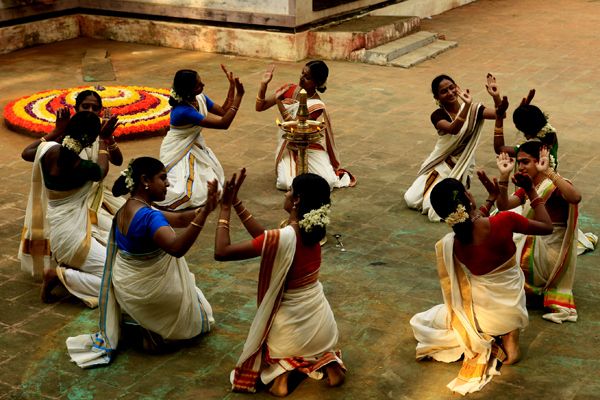
The dance is primarily associated with the Thiruvathira Nakshatra, a star in the Hindu lunar calendar, which is celebrated in honor of Lord Shiva and Parvati. It is observed during the festival of Thiruvathira, which is part of the larger celebration of Onam and the harvest season. Thiruvathira is performed in a circle by women who dress in traditional Kerala sarees. The dance is characterized by its graceful, rhythmic movements and hand gestures. The dancers move in synchrony, often in a circular formation, symbolizing unity and harmony. The dance is accompanied by traditional folk songs that are sung in praise of Lord Shiva and are related to themes of love, devotion, and nature. The songs play a crucial role in guiding the rhythm and movements of the dance. Thiruvathira has cultural and religious significance. It is not only a form of entertainment but also a ritualistic practice that brings communities together and celebrates the values of devotion, purity, and respect.

Comments